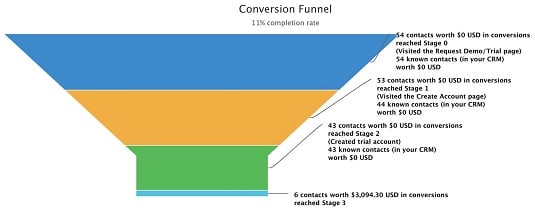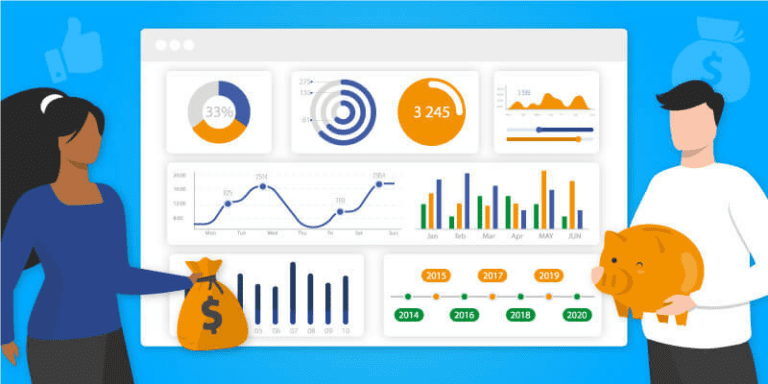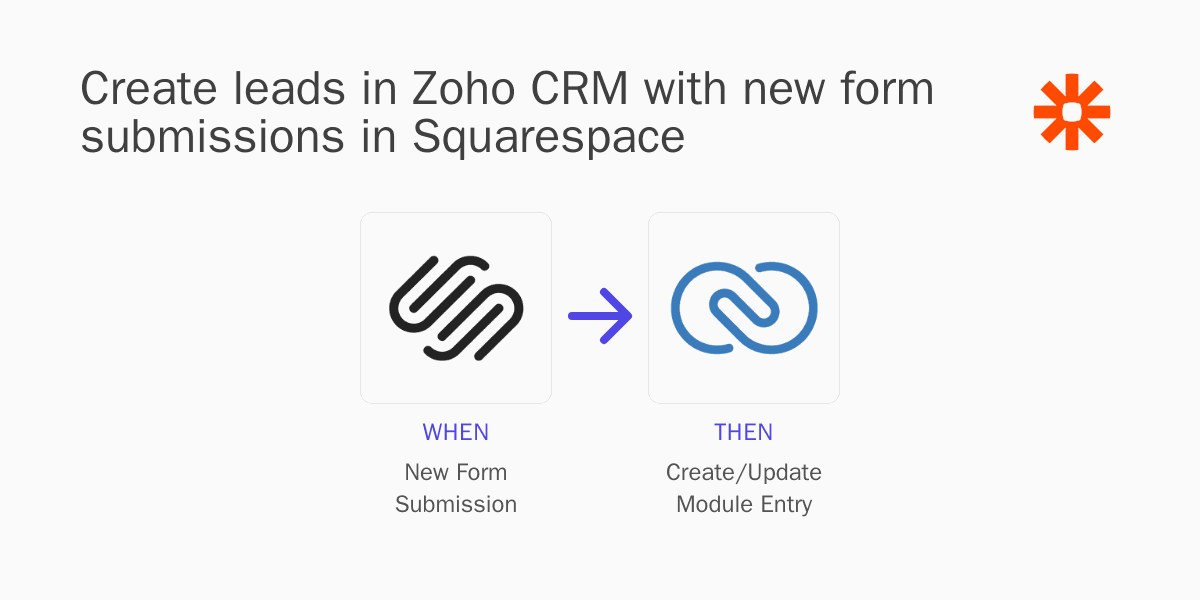
Introduction: The Power of a Well-Defined CRM Marketing Funnel
In today’s competitive landscape, understanding and leveraging the power of a Customer Relationship Management (CRM) marketing funnel is no longer optional – it’s essential. A well-structured CRM marketing funnel acts as the engine driving your customer acquisition, engagement, and retention efforts. It’s the roadmap that guides potential customers from initial awareness to becoming loyal brand advocates. This comprehensive guide will walk you through every step of setting up, optimizing, and growing your CRM marketing funnel, ensuring you’re equipped to transform leads into lifelong customers.
The core concept revolves around visualizing the customer journey. Think of it as a funnel, wide at the top and narrowing towards the bottom. At each stage, your marketing efforts are designed to nudge prospects further down the funnel, ultimately leading them to a purchase and beyond. This isn’t just about selling; it’s about building relationships, understanding customer needs, and delivering value at every touchpoint. Getting this right can significantly improve your bottom line and foster sustainable growth.
Understanding the CRM Marketing Funnel: Stages and Objectives
Before we dive into the setup, let’s break down the key stages of a typical CRM marketing funnel. Each stage has specific objectives, and your marketing activities should be tailored to achieve those goals. The most common stages are:
- Awareness: This is the top of the funnel (TOFU). The primary goal is to create awareness of your brand and attract potential customers.
- Interest: Once prospects are aware of your brand, you need to pique their interest and provide valuable information.
- Decision: This is where prospects evaluate their options and decide whether to purchase from you.
- Action/Conversion: The stage where the sale happens.
- Loyalty/Advocacy: This is the bottom of the funnel (BOFU). The focus shifts to retaining customers and turning them into brand advocates.
Each stage requires a different approach. For instance, at the awareness stage, you might use content marketing, social media campaigns, and SEO strategies. At the decision stage, you might offer free trials, product demos, or special promotions. The key is to tailor your messaging and offers to the specific needs and concerns of prospects at each stage.
Setting Up Your CRM: Choosing the Right Platform
Choosing the right CRM platform is the cornerstone of a successful CRM marketing funnel. The market is flooded with options, each with its strengths and weaknesses. Here’s how to make the right choice:
- Assess Your Needs: What are your primary goals? Do you need robust sales automation, advanced analytics, or seamless integration with other tools? Identify your must-have features and nice-to-haves.
- Consider Your Budget: CRM platforms range in price from free to enterprise-level. Determine your budget and find platforms that fit within your financial constraints.
- Evaluate Scalability: Choose a platform that can grow with your business. Consider how many users you’ll need, the amount of data you’ll store, and the potential for future expansion.
- Look for Integrations: Ensure the platform integrates with your existing tools, such as your email marketing software, website, and social media platforms.
- Read Reviews and Compare Options: Research different platforms and read reviews from other users. Compare features, pricing, and customer support.
Some popular CRM platforms include Salesforce, HubSpot, Zoho CRM, Microsoft Dynamics 365, and Pipedrive. Each has its unique strengths. For example, HubSpot is known for its marketing automation capabilities, while Salesforce is a powerful platform for large enterprises. Zoho CRM offers a cost-effective solution for small and medium-sized businesses. Researching these platforms and others, considering your specific needs, will help you choose the best fit.
Building Your CRM Marketing Funnel: Step-by-Step Guide
Now, let’s get into the practical steps of building your CRM marketing funnel. This involves mapping out the customer journey, defining your marketing activities, and automating your processes.
- Map the Customer Journey: Understand how your customers interact with your brand. What touchpoints do they have? What information do they need at each stage? Create a detailed customer journey map that outlines each step of the process.
- Define Your Buyer Personas: Create detailed profiles of your ideal customers. This includes their demographics, psychographics, goals, and pain points. This helps you tailor your messaging and offers.
- Create Content for Each Stage: Develop content that addresses the needs and concerns of prospects at each stage of the funnel. This includes blog posts, ebooks, videos, webinars, and case studies.
- Set Up Lead Capture Forms: Use lead capture forms on your website, landing pages, and social media platforms to collect contact information. Offer valuable incentives, such as ebooks or checklists, in exchange for their information.
- Implement Lead Scoring: Assign points to leads based on their behavior and demographics. This helps you prioritize your sales efforts and focus on the most qualified leads.
- Automate Your Workflows: Use marketing automation tools to send targeted emails, trigger actions based on lead behavior, and nurture leads through the funnel.
- Integrate with Your Sales Team: Ensure your sales team has access to the information they need to follow up with leads and close deals. This includes lead scores, contact history, and relevant content.
- Track Your Results: Monitor your key performance indicators (KPIs) such as website traffic, lead generation, conversion rates, and customer lifetime value. Use these metrics to optimize your funnel.
Marketing Activities at Each Stage of the Funnel
Let’s delve deeper into the specific marketing activities you can implement at each stage of the funnel. This will give you a clearer picture of how to engage prospects and guide them towards conversion.
Awareness Stage (TOFU)
- Content Marketing: Create blog posts, articles, and infographics that address common pain points in your industry.
- Social Media Marketing: Share your content on social media platforms and engage with your target audience. Run targeted ads to reach a wider audience.
- SEO: Optimize your website and content for search engines to improve your organic visibility.
- Public Relations: Build relationships with journalists and influencers to get your brand mentioned in the media.
- Paid Advertising: Run paid advertising campaigns on Google Ads and social media platforms to drive traffic to your website.
Interest Stage
- Email Marketing: Send targeted email campaigns to nurture leads and provide valuable information.
- Webinars: Host webinars to educate prospects and showcase your expertise.
- Case Studies: Share case studies to demonstrate the value of your products or services.
- Ebooks and Whitepapers: Offer valuable resources in exchange for contact information.
- Remarketing: Target prospects who have visited your website with relevant ads.
Decision Stage
- Free Trials and Demos: Offer free trials or product demos to allow prospects to experience your product or service.
- Special Promotions: Provide special offers and discounts to incentivize purchases.
- Testimonials and Reviews: Showcase testimonials and reviews from satisfied customers.
- Comparison Charts: Create comparison charts to highlight the benefits of your product or service compared to competitors.
- Live Chat: Offer live chat support to answer questions and assist prospects in making a decision.
Action/Conversion Stage
- Streamlined Checkout Process: Make it easy for customers to purchase your product or service.
- Multiple Payment Options: Offer a variety of payment options to cater to different preferences.
- Clear Call-to-Actions: Use clear and concise calls to action to encourage purchases.
- Limited-Time Offers: Create a sense of urgency with limited-time offers.
- Personalized Recommendations: Recommend products or services based on customer preferences.
Loyalty/Advocacy Stage (BOFU)
- Customer Service: Provide excellent customer service to build loyalty.
- Personalized Communication: Send personalized emails and offers based on customer behavior.
- Loyalty Programs: Offer loyalty programs to reward repeat customers.
- Feedback and Surveys: Collect feedback and surveys to understand customer needs and improve your products or services.
- Social Media Engagement: Encourage customers to share their experiences on social media.
Optimizing Your CRM Marketing Funnel: Continuous Improvement
Building a CRM marketing funnel isn’t a one-time task; it’s an ongoing process of optimization. You need to constantly monitor your results, identify areas for improvement, and make adjustments to your strategy.
- Analyze Your Data: Regularly analyze your data to track your KPIs and identify trends.
- A/B Test Your Content: A/B test your content, landing pages, and email campaigns to see what performs best.
- Refine Your Buyer Personas: Continuously refine your buyer personas based on customer feedback and data analysis.
- Update Your Content: Keep your content fresh and up-to-date to ensure it remains relevant.
- Stay Up-to-Date: Stay informed about the latest marketing trends and technologies.
Remember, optimization is a continuous cycle. The more you analyze, test, and refine your funnel, the better your results will be. Don’t be afraid to experiment and try new things. What works for one business might not work for another. The key is to find what works best for your specific audience and industry.
Leveraging Marketing Automation for Funnel Success
Marketing automation is a game-changer when it comes to optimizing your CRM marketing funnel. It allows you to automate repetitive tasks, personalize your communication, and nurture leads more effectively.
Here’s how to leverage marketing automation:
- Automated Email Sequences: Create automated email sequences to nurture leads and guide them through the funnel.
- Lead Scoring and Segmentation: Use lead scoring to prioritize your sales efforts and segment your leads based on their behavior and demographics.
- Personalized Website Experiences: Personalize your website experience based on the visitor’s behavior and preferences.
- Triggered Actions: Set up triggers to automatically send emails or trigger other actions based on specific events, such as a form submission or a website visit.
- Reporting and Analytics: Use marketing automation tools to track your results and measure the performance of your campaigns.
By automating these tasks, you can save time, improve efficiency, and provide a more personalized experience for your customers. Marketing automation is no longer a luxury; it’s a necessity for businesses that want to succeed in today’s competitive market.
Integrating Your CRM with Other Tools
To maximize the effectiveness of your CRM marketing funnel, you need to integrate your CRM with other essential tools. This allows you to streamline your processes, improve data accuracy, and gain a holistic view of your customers.
Here are some key integrations:
- Email Marketing Software: Integrate your CRM with your email marketing software to automate your email campaigns and track your results.
- Website Analytics: Integrate your CRM with your website analytics platform to track website traffic, lead generation, and conversion rates.
- Social Media Platforms: Integrate your CRM with your social media platforms to track social media engagement, manage your social media presence, and run targeted ads.
- Sales Automation Tools: Integrate your CRM with sales automation tools to streamline your sales processes and improve sales productivity.
- Help Desk Software: Integrate your CRM with help desk software to provide excellent customer service and resolve customer issues efficiently.
The more integrated your tools are, the better you can understand your customers and provide them with a seamless experience. These integrations are vital for a cohesive and efficient marketing strategy.
Measuring Success: KPIs and Metrics
To truly understand the effectiveness of your CRM marketing funnel, you need to track and analyze key performance indicators (KPIs). These metrics will help you identify what’s working, what’s not, and where you need to make improvements.
Here are some important KPIs to track:
- Website Traffic: Track the number of visitors to your website.
- Lead Generation: Track the number of leads you generate.
- Conversion Rates: Track the conversion rates at each stage of the funnel.
- Customer Acquisition Cost (CAC): Calculate the cost of acquiring a new customer.
- Customer Lifetime Value (CLTV): Estimate the total revenue you expect to generate from a customer over their lifetime.
- Customer Churn Rate: Measure the rate at which you lose customers.
- Return on Investment (ROI): Calculate the return on your marketing investments.
By regularly monitoring these KPIs, you can gain valuable insights into the performance of your funnel and make data-driven decisions to optimize your results. Regularly analyzing your data is non-negotiable for improvement.
Common Challenges and How to Overcome Them
Setting up and optimizing a CRM marketing funnel can present some challenges. Here are some common hurdles and how to overcome them:
- Lack of Data: Ensure you have enough data to make informed decisions. Implement lead capture forms, track customer behavior, and integrate your CRM with other tools.
- Poor Data Quality: Clean and maintain your data regularly. Remove duplicate entries, correct errors, and update outdated information.
- Low Lead Quality: Focus on attracting high-quality leads. Target your marketing efforts to reach your ideal customers and implement lead scoring.
- Low Conversion Rates: Analyze your funnel and identify the bottlenecks. Optimize your content, landing pages, and offers.
- Lack of Integration: Integrate your CRM with other tools to streamline your processes and improve data accuracy.
- Resistance to Change: Get buy-in from your team and provide training and support. Clearly communicate the benefits of the CRM marketing funnel.
By anticipating and addressing these challenges, you can increase your chances of success and build a high-performing CRM marketing funnel. Proactive problem-solving is key.
Conclusion: The Future of CRM Marketing Funnels
The CRM marketing funnel is constantly evolving, driven by technological advancements and changing customer expectations. As businesses become more customer-centric, the importance of a well-defined and optimized CRM marketing funnel will only continue to grow.
Here are some trends to watch:
- Personalization: Customers expect personalized experiences. Use data and insights to tailor your messaging and offers.
- Artificial Intelligence (AI): AI will play an increasingly important role in automating tasks, analyzing data, and personalizing customer experiences.
- Omnichannel Marketing: Engage customers across multiple channels, including email, social media, and mobile.
- Mobile Optimization: Ensure your website and content are optimized for mobile devices.
- Data Privacy: Prioritize data privacy and security to build trust with your customers.
By embracing these trends, you can stay ahead of the curve and build a CRM marketing funnel that drives sustainable growth. The future belongs to businesses that prioritize customer relationships and deliver exceptional value. Continuous learning and adaptation are essential for long-term success.
Setting up and optimizing a CRM marketing funnel is a significant undertaking, but it’s an investment that can pay off handsomely. By following the steps outlined in this guide, you can build a funnel that attracts leads, converts them into customers, and turns them into loyal brand advocates. Remember that it’s an ongoing process, so be prepared to continuously analyze, test, and refine your strategy to achieve optimal results. Good luck, and may your funnel be ever fruitful!


